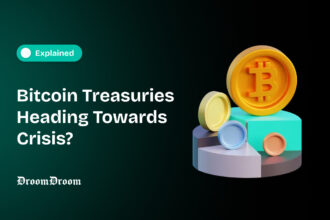Blockchain technology is a democratized version of a traditional ledger. It is a digital ledger of transactions viewable by anyone with an internet connection. Cryptocurrencies are powered by blockchain technology, and the fundamental principles of decentralization, immutability, and transparency of public blockchains have come to the fore since Bitcoin’s inception. Blockchain technology has transformed the way individuals share and conduct transactions. It empowers a paradigm shift by preventing information from being restricted to a small group of powerful individuals. For those invested in cryptocurrencies and looking to deep dive into a particular network’s activity, the question arises, how and where can you access this publicly available data? Enter blockchain explorers.
A blockchain explorer is an online search engine that allows you to view all data on a public blockchain network. This includes real-time and historical data such as transactions, fees, wallet addresses, and blocks since the inception of a particular blockchain network.
What are Blockchain Explorers?
Blockchain explorers, also known as block explorers, are websites that provide detailed analytics and information on a blockchain network’s entire history.
Explorers provide insights into the inner workings of a blockchain and ensure transparency for its users. Data provided by explorers include transaction histories and volume, wallet balances, network stability, and technical information like block height, block difficulty, and hash rate.
A block explorer allows you to search for any address or transaction on a blockchain, but it is read-only 📖 – it cannot execute any transaction on your behalf.
— Etherscan (@etherscan) December 29, 2021Block explorers can be used to track one’s own wallet balances and check the status of their transactions. For miners (in proof-of-work blockchains) or validators (in proof-of-stake blockchains), explorers can be used to identify if they have successfully mined or validated a block.
Publicly available data such as this, often called on-chain metrics, can also be used as a fundamental analysis tool to identify crucial information and trends about a cryptocurrency and its associated blockchain network. For example, a steady uptick in transaction volumes and active wallets indicates a promising network.
Types of Blockchain Explorers
Each public blockchain has its very own explorer. For example, Ethereum data cannot be extrapolated on a Bitcoin explorer and vice-versa. That being said, there are many multi-chain explorers as well.
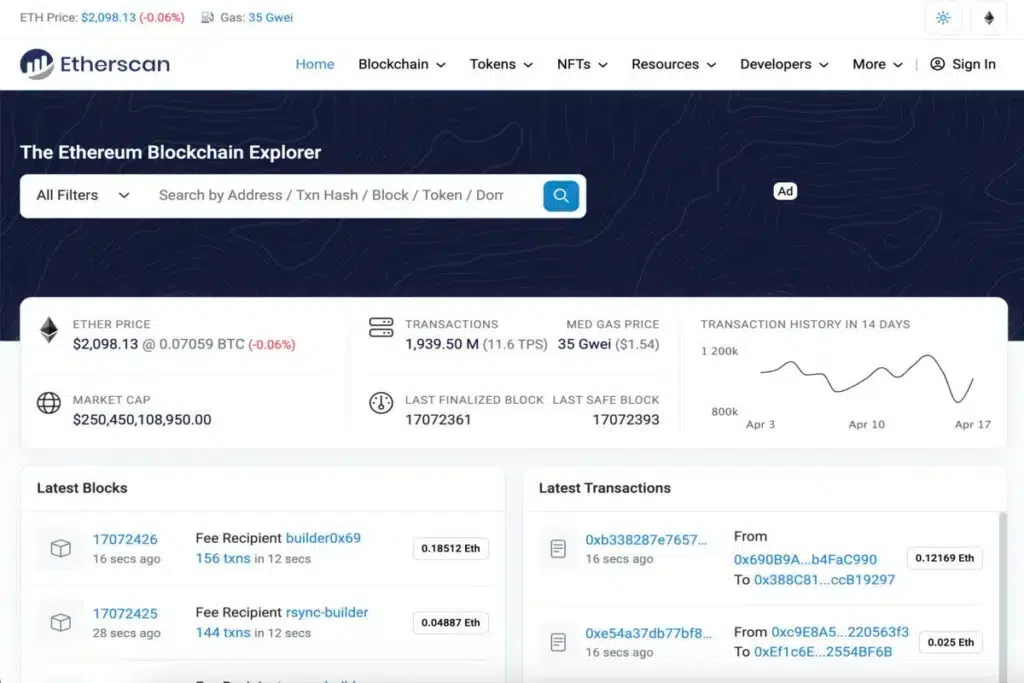
Depending on the blockchain, explorers can also be an information hub for a myriad of cryptocurrencies. For instance, Ethereum block explorers can provide data on the thousands of cryptocurrencies or ERC-20 tokens running on the Ethereum network. Some of the most popular blockchain explorers include the following:
- Etherscan for Ethereum and ERC-20 tokens
- BscScan for Binance Smart Chain
- Blockchain.com (multi-chain explorer) for Bitcoin, Ethereum, and Bitcoin Cash
- Polygon Scan for Polygon
- Solscan for Solana
The easiest way to find a block explorer for a specific cryptocurrency is by navigating to the explorer section on CoinMarketCap. By clicking on this option, the platform provides you with a list of supported explorers for the selected cryptocurrency.
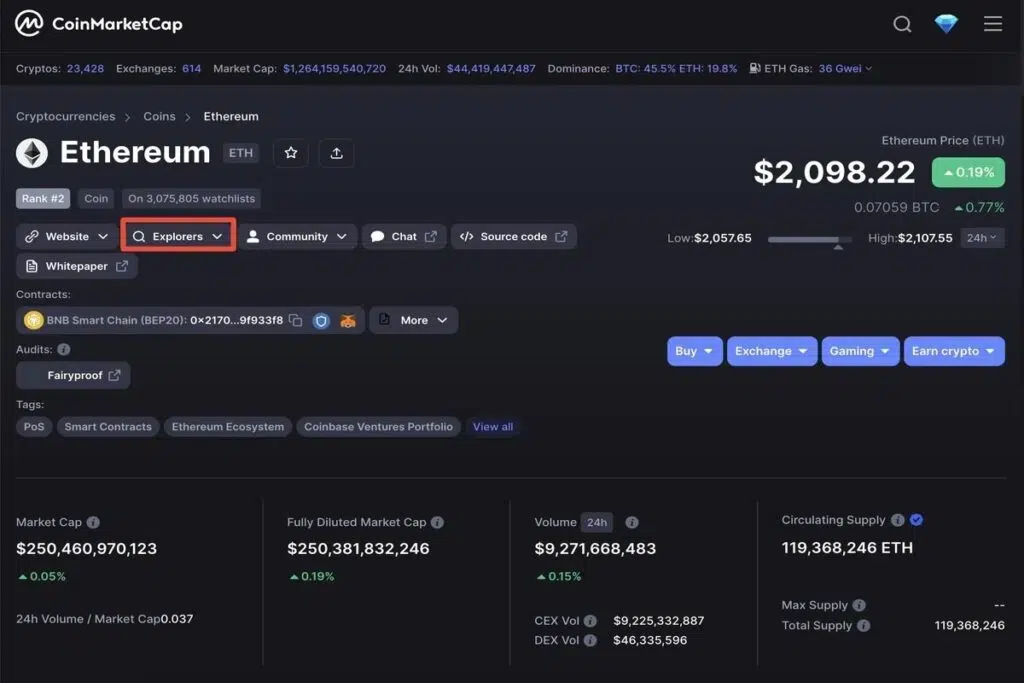
How do Blockchain Explorers Function?
Now that we understand what blockchain explorers provide to a user, it is crucial to understand them from a technical perspective. In other words, how do block explorers decode information from a blockchain and display it in a legible form for you?
A blockchain is a digital ledger that records and maintains an immutable record of transactions. A network of nodes forms the infrastructure of a blockchain. These nodes operate together to validate and verify transactions. Each node on a particular network has a copy of the ledger.
An explorer connects to a blockchain node to retrieve all information about a network. Once it has a copy of the ledger from the connected node, this information is then presented in a searchable and understandable format through a relational database like Structured Query Language (SQL) and an Application Programming Interface (API).
How to Use a Blockchain Explorer
The next natural question is how do you use a blockchain explorer and what are some of the most common actions you can take by using the tool? Despite there being different explorer databases, most function in a similar manner. The following section outlines a simple guide on some of the various actions you can take using an explorer.
Search Wallet Addresses’ Activity and Balance
Blockchain explorers are a helpful tool for not only keeping track of your own wallet addresses and holdings but also allows for the transparency of tracking activity on any specific wallet. This can be done by following the simple steps outlined below.
- Step 1: Paste the wallet address or public key into the search bar
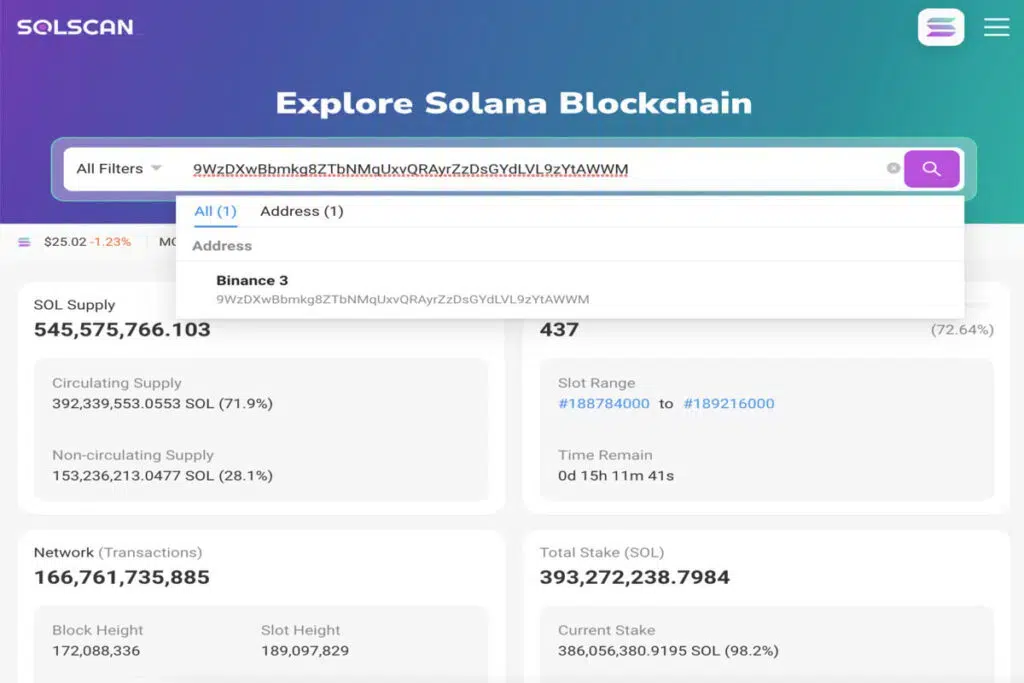
- Step 2: This will redirect you to a page that shows the overview of the wallet, including its total value, recent transactions, and token holdings.
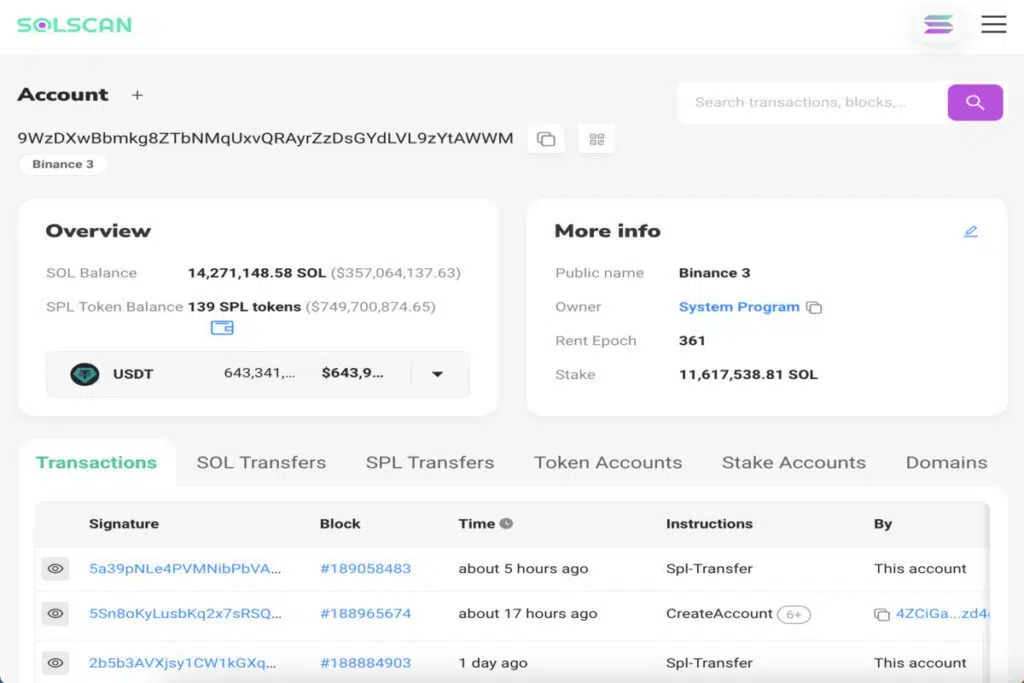
Search Transaction Details and Status
You can track the status of your transactions in real-time by using a blockchain explorer. When you initiate a transaction, your crypto wallet will provide you with a transaction ID, often known as a transaction hash. This can be entered into an explorer’s search bar to know the transaction status.
- Step 1: Copy the transaction hash from your crypto wallet
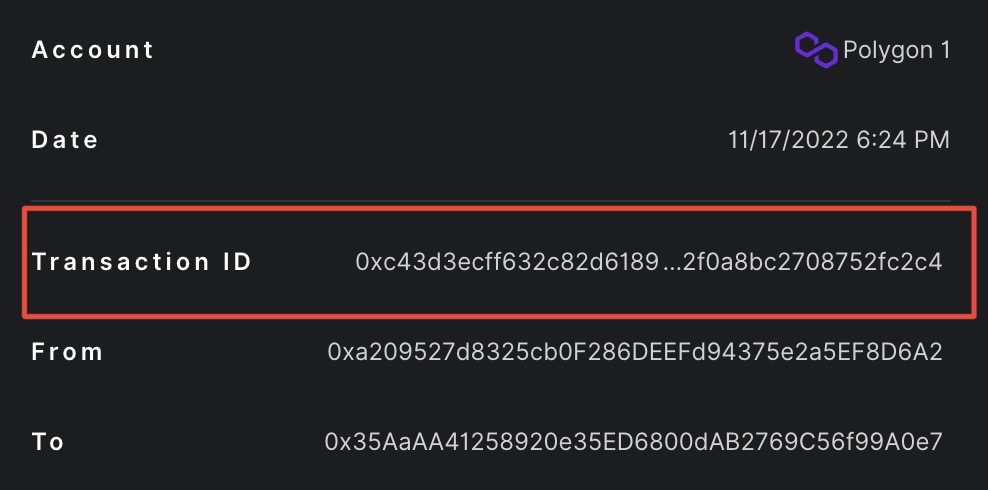
- Step 2: Paste and enter the transaction into the search bar in the explorer
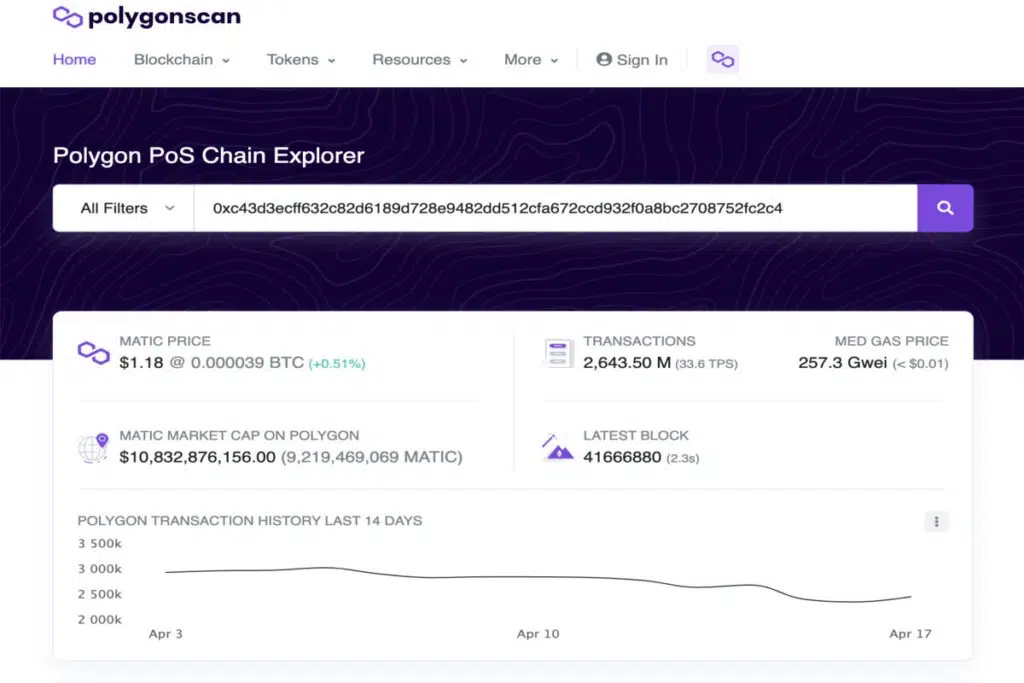
- Step 3: This will load the specific transaction information. The page will display the status, sender and receiver addresses, a timestamp, the block number, the transaction amount, and fees.
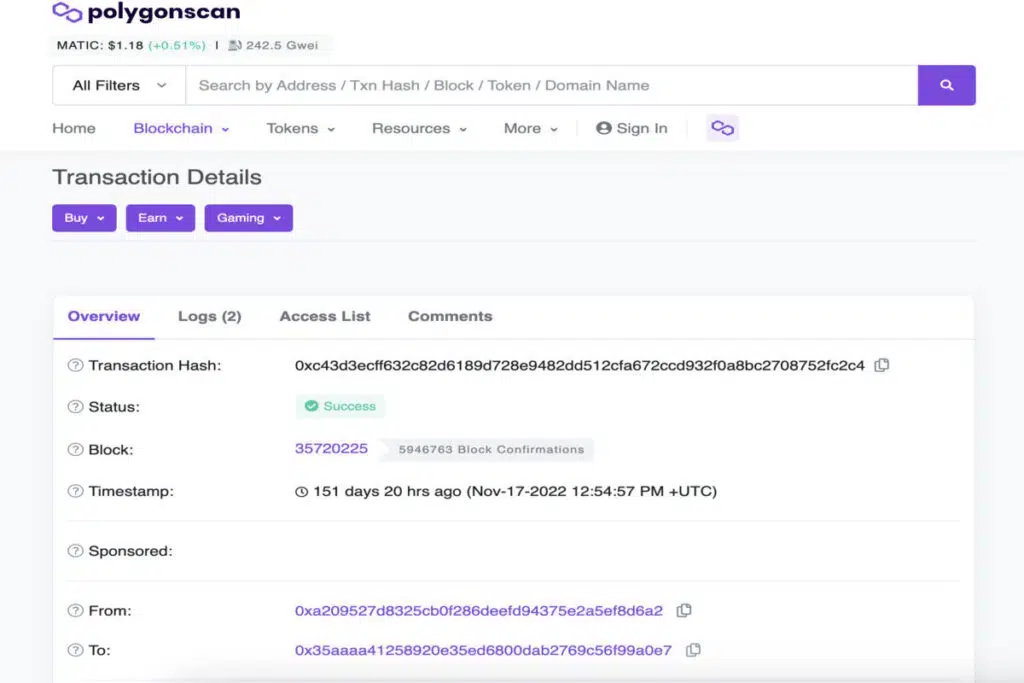
View the Details of a Token
Layer 1 blockchains like Ethereum, BNB chain, and Solana have a growing ecosystem of native tokens that are built on their respective blockchain networks. Using these layer 1 block explorers gives you access to insights about thousands of tokens. For example, there are over 450,000 tokens built on the Ethereum blockchain, and you can use Etherscan to research the fundamentals of each specific token.
- Step 1: Enter the token name or ticker symbol into the search bar

- Step 2: This will pull up a wealth of information about the token. This includes total supply, current number of holders, market metrics, recent transactions, and links to official social media profiles.
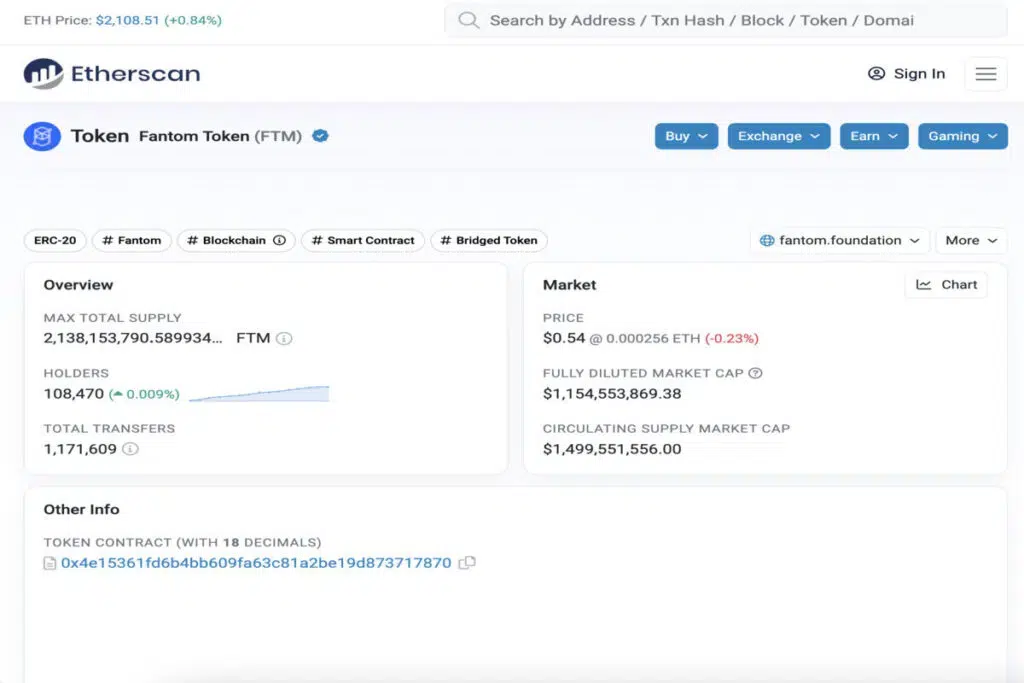
Conclusion
Blockchain explorers are versatile platforms for anyone in the crypto space. They ensure transparency and accountability by providing you with a birds-eye view of a particular blockchain ecosystem and the cryptocurrencies built on it. Apart from being a tool to analyze the health and prospects of a specific network, explorers can be a helpful platform for newcomers to understand the fundamentals of blockchain technology.




















